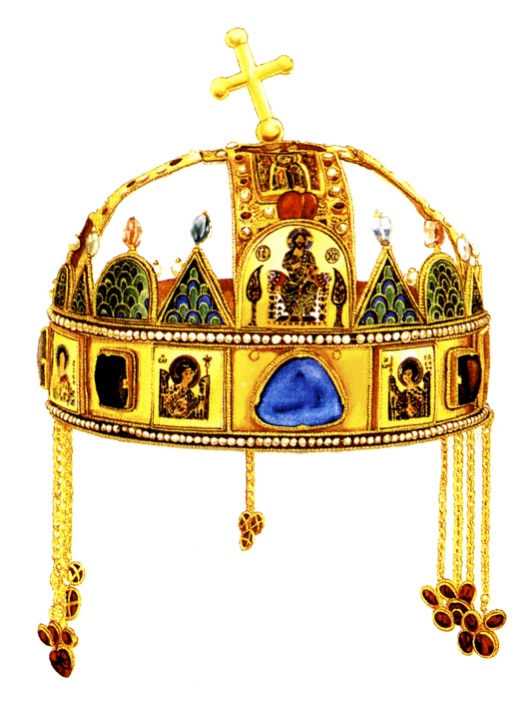By Gellért Rajcsányi
While the world watches the coronation of the new King of the United Kingdom and the 14 commonwealth realms, on the other side of Europe some will be thinking about the disappearance of their own monarchical traditions.
Hungary was a kingdom for nearly a thousand years, from the year 1000 to 1946. The history of Hungarian nationhood cannot be separated from the institution of monarchy, and more importantly, from a certain crown, which is considered to be the Holy Crown of Saint Stephen, and which itself is the symbol of the Hungarian people, even in the Hungarian republic of today.
Indeed, the Hungarian Holy Crown is far from being an ‘ordinary’ royal crown, whose equivalents in many other European countries changed from century to century, often only due to the whim of the new monarch. The Hungarian crown as an object has a completely different history and role in the life of the nation.
The history of the Hungarian Holy Crown could be turned into a storyline from The Lord of the Rings or The Game of Thrones—except for the dragons and elves. What is certain is that this extraordinary medieval artefact of mysterious origin was of central importance in Hungarian history. It was the trigger of international wars and intrigues within dynasties, and its history was marked by sublime events and twists and turns worthy of adventure novels.
Ancient tradition held that this crown was presented directly to Stephen I, the first King of Hungary, who was later canonised by Pope Sylvester II of Rome in the year 1000 of our Lord. According to the corresponding legends, the crown is the first and original symbol of the Hungarian Kingdom founded by Stephen.
Research in more recent centuries, however, has found that the origins of the Holy Crown of Hungary are more complex—and a lot more colourful. In the 20th century it became generally recognized that the crown was made up of two distinct parts, the Greek crown (Corona Graeca) and the Latin crown (Corona Latina).
The crown is made of gold and features enamel images, and it is decorated with pearls and precious stones. On the top is the distinctive crooked cross—together with it, the crown is the symbol of the Hungarian nation, which can still be seen on the top of Hungary’s traditional historic coat of arms, reintroduced after the fall of communism.
The Greek crown is the lower part: the main part of the hoop, the frontal part, shows Christ as judge of the world (Pantokrator) seated on a throne, with his hand raised in blessing, holding the ‘book of life,’ emphasising the divine origin of the ruler’s power. On the back side, however, is the Byzantine Emperor Michael VII Doukas, with the Greek inscription next to him identifying him precisely as “Michael, the Emperor of the Romans, believer in Christ, the Doukas.”
According to some research, this Byzantine crown was given to Géza I, the 7th King of Hungary, by the Byzantine Emperor, after Géza appealed to him for an alliance against, first, the Pope in Rome, who was seeking suzerainty over Hungary, and second, the Holy Roman Emperor. Apparently, the geopolitical turmoil of Europe was not boring in the 11th century either.
The upper part of the Hungarian Holy Crown is the Latin crown, which has a rim featuring additional enamel images of saints installed between sapphires, rubies, amethysts, and pearls.
The distinctive cross at the top of the crown may have been replaced in the 16th century, and some speculate that it was damaged in the 17th century when the iron box of the crown was snapped onto the improperly placed royal item. What is certain is that the cross has been ‘crooked’ for many centuries and has long been represented in the same way—slanting—in the Hungarian coat of arms.
According to some historians, the symbolism of the Holy Crown is twofold: the upper part refers to God’s heavenly kingdom, while the lower part is about the earthly kingdom.

No comments:
Post a Comment
Comments are subject to deletion if they are not germane. I have no problem with a bit of colourful language, but blasphemy or depraved profanity will not be allowed. Attacks on the Catholic Faith will not be tolerated. Comments will be deleted that are republican (Yanks! Note the lower case 'r'!), attacks on the legitimacy of Pope Leo XIV as the Vicar of Christ, the legitimacy of the House of Windsor or of the claims of the Elder Line of the House of France, or attacks on the legitimacy of any of the currently ruling Houses of Europe.